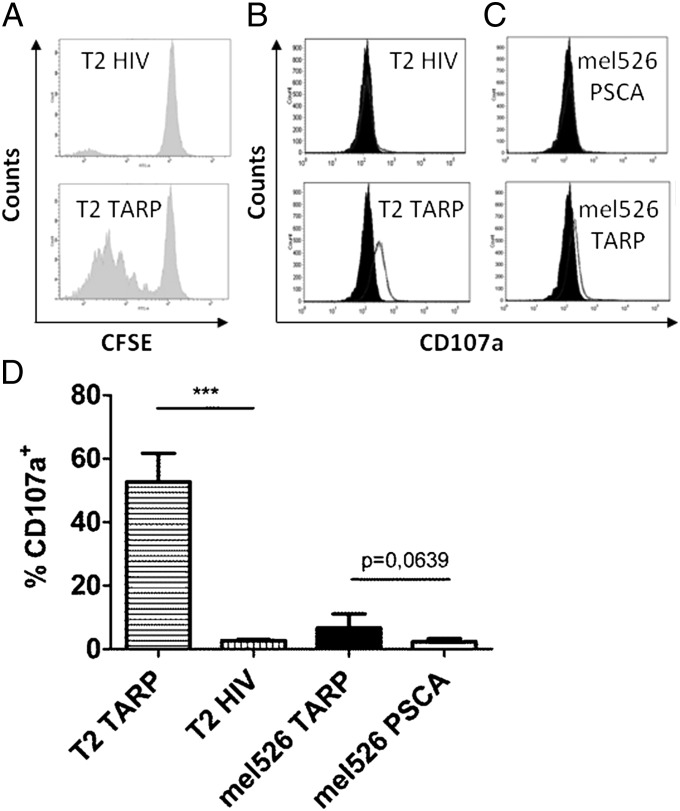Fig. 3.
TARP-TCR–modified T cells proliferate and get activated in response to specific stimulation. (A) TARP-TCR–engineered T cells were labeled with CFSE and mixed with T2 target cells pulsed with either the HLA-A2–restricted TARP(P5L)4–13 peptide (T2 TARP) or the irrelevant HLA-A2–restricted HIV-1pol476–484 peptide (T2 HIV). The CFSE-labeled T cells were analyzed for cell proliferation by flow cytometry 5 d later. One representative experiment of three is shown. (B) TARP-TCR–engineered T cells were mixed with T2 target cells pulsed with either the TARP(P5L)4–13 peptide (T2 TARP) or the irrelevant HIV-1pol476–484 peptide (T2 HIV). T cells were analyzed for CD107a expression after 12 h. One representative experiment of two is shown. (C) TARP-TCR–engineered T cells were mixed with mel526 target cells transfected with a plasmid encoding either the full-length wild-type TARP (mel526 TARP) protein or the irrelevant PSCA protein (mel526 PSCA). T cells were analyzed for CD107a expression after 12 h. One representative experiment of two is shown. (D) Percentage CD107a+ of all CD3+ T cells after culture with the indicated target cells. Asterisks denote significant difference (***P < 0.001, Student t test). Bars depict mean +SD of two experiments run in triplicates.

